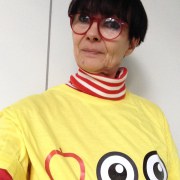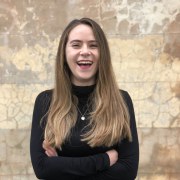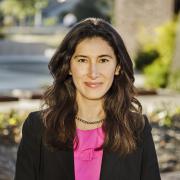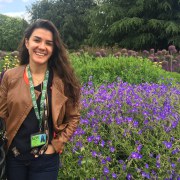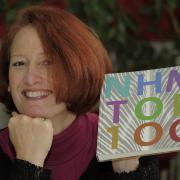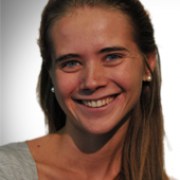Welcome, everyone: using inclusive language in museum spaces
Museums aim to be welcoming spaces, and public programmes are created with the intention of reaching the widest possible audiences. How can we ensure the language we use helps us to achieve these goals? What can we do to make sure that the way we write and speak is sensitive and inclusive? This session invites participants to actively explore these questions. Presenters will briefly introduce their work in this area, and offer three memorable tips on using inclusive language. Then it’s over to participants. Small groups will each take a real-life example of museum text and discuss the steps they might take to ensure it is inclusive – and perhaps even rewrite the copy. The session will close with small groups sharing their approach with the wider group. While this session workshops writing for museum exhibitions, the learnings can be applied to communication of any kind, from public programmes to public events, public engagement and internal comms.
This session is part of the Inclusion and Equity conference track.
Outcomes: what will participants get from this session? Skills, knowledge, experience etc.
Participants will leave the session with a set of practical tips on how to use inclusive language in their exhibition content. They will gain confidence in applying this knowledge, as they will have workshopped examples in the session. While this session workshops writing for museum exhibitions, these learnings can be applied to communication of any kind, from public programmes to public events, public engagement and internal comms.
Facilitator
Head of Communications & PR
Session speakers
Bronwyn O’Reilly is the editor in the interpretation team at the Natural History Museum in London, and is currently creating an inclusive language guide to support the museum’s interpretation developers as they write exhibition content. She will use her experience interrogating language to help participants think about the changes they can make to ensure their content is as inclusive and welcoming as possible.
San Francisco
United States
Amparo Leyman Pino, M. Ed. will share with participants her experience adapting language and culture to create multilingual exhibitions, blended language programming and language neutral learning spaces. Her methodology has proven accuracy and cultural humility to connect effectively with audiences all over the world.
National Outreach Manager
Science is European, or at least Western, right?! A Eurocentric view on science dominates European museums making it difficult to notice and question the language we use when we speak about the history of science. The speaker, an ED&I consultant specializing in multicultural science, talks us through examples of her work challenging and questioning this bias. Examples will cover science exhibitions, programmes, and public events.
Ryan Schuessler is an exhibition developer at the Field Museum in Chicago whose recent work includes Native Truths: Our Voices, Our Stories and First Kings of Europe. His practice and study focus on how to best facilitate community-centered curation and exhibition writing, as well as how exhibitions of all subjects can be more inclusive and better represent non-Western worldviews.
Exhibition Manager Communities and touring
Amgueddfa Cymru - National Museum Wales
Ulrike is currently Exhibitions Manager – Communities and Touring at Amgueddfa Cymru - National Museum Wales. She has 20 years of experience working for museums and arts organisations in curatorial (Senior Curator of Art, Imperial War Museum), exhibition and partnership management roles (Creative Producer, Ffotogallery). Ulrike has been working for Amgueddfa Cymru since 2018. In 2022, Ulrike worked with a community group on developing the redisplay of the portrait of Lieutenant-General Thomas Picton for the Reframing Picton exhibition at National Museum Cardiff. The exhibitions team worked closely with the community on creating the most sensitive language for use in the exhibition in both Welsh and English.
head of science communication
In recent years we have made language-sensitive outreach a key part of all our teaching and learning activities at the NHM Vienna. Since 2018 we have been expanding our language-sensitive activities, adapting existing programmes and developing new processes and materials.
science didactics specialist and developer
Christina Brandenberger is a specialist on interaction and science didactics and develops interactive exhibitions at the Swiss Science Centre Technorama. In multilingual Switzerland, Technorama provides exhibit texts in four languages. But do these texts really speak the visitors’ language? To understand and incorporate how visitors see the role of the text, a recent workshop invites visitors to write exhibit texts for each other, uncovering the visitors’ own strategies to communicate science.

